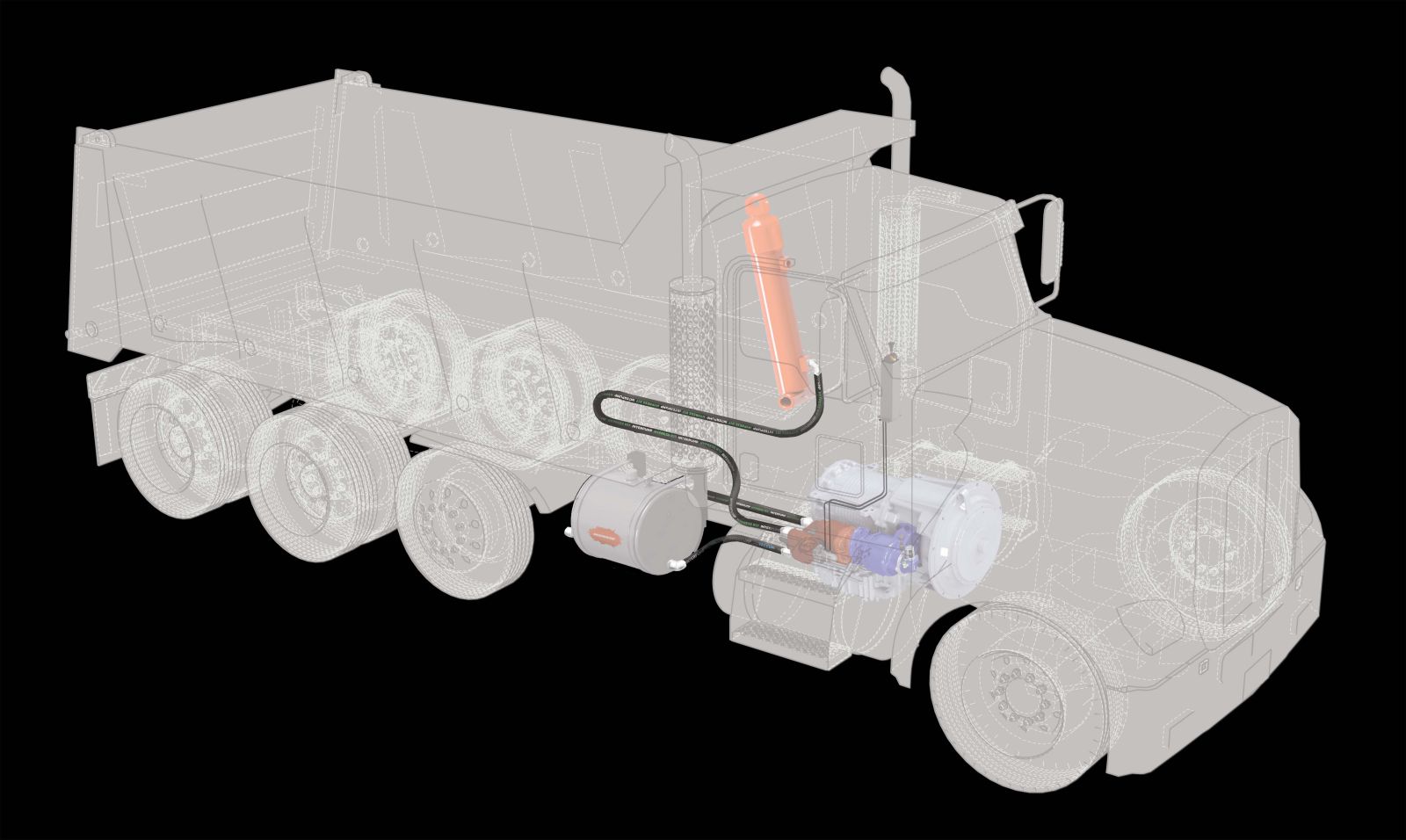Hydraulic hose assemblies: A small piece of the hydraulic system that plays a big part

Illustration by Zach Pitzer
They say that the human body is a “fined tuned piece of machinery;” which you could relate the similarities to that of a hydraulic system.
In a hydraulic system, hydraulic hose assemblies perform an important task that is often forgotten about. Our veins carry blood throughout our bodies; likewise, the hydraulic hose assemblies carry hydraulic oil from the pump to the cylinder to the reservoir and so on, in order for work to be done. The hydraulic hose assembly will ensure that the hydraulic oil moves throughout the hydraulic system in a secure manner so work can be continuously carried out. Therefore, Interpump Fluid Solutions’ hose assembly products carry the life blood of a hydraulic system.
In our ever changing and developing world, mankind is expected to soar to new heights. We are expected to move faster, think quicker, be more efficient, carry a bigger load, be stronger, cope with increase stress, and (as we all know too well) even more than that.
In a hydraulic system, design engineers have developed pumps that are more efficient and create more flow. They develop cylinders that can lift a heavier load. They have developed hydraulic and electrical accessories that aid in the effectiveness of the complete hydraulic system. Today, our hydraulic systems have been transformed to meet all these new requirements.
All hydraulic systems use hydraulic hose assemblies to connect all the important components in the system, just like the veins in our bodies convey fluids so we can function. And, when hydraulic oil does not flow to the intended location, a function of the hydraulic system will stop—much like in our bodies.
In a hydraulic system, the average cost of the hydraulic hose assemblies are about 6–8% of the total cost of a complete hydraulic system. However, sometimes the hydraulic hose assemblies are the reason for the system failures; failed and externally damaged hose assemblies can make up 50–65% of hydraulic failures.
If we take a look at an industry that relies on hydraulically operated machinery, such as mining, some examples of costs and loss can be attributed to hydraulic hose assemblies.
According to Martin Pretorius, chief mine engineer for Sasol Mining based in South Africa, if a hose assembly failure is due to external damage or abnormal pressure surges in the hydraulic system, a hose failure can cause a loss of 80–90 gallons of hydraulic oil until they are able to identify that the hose assembly has failed and shut the machine down. The loss of production and labor costs are attributed to thousands of dollars per hour. Therefore, a hydraulic hose assembly at a cost of about $450 is something to be considered.
Production Engineer Peet Visage at AngloGold Ashanti, a the gold mine in South Africa, can attribute the loss of a hydraulic hose, that may cost $37, to a total loss to the mine of upwards of $9,000.
Gary Kolbet, Vecoplan’s engineering manager, based in North Carolina, estimates a loss of one main hydraulic hose assembly on one unit would cost more than $2,000 to repair, and that does not take into consideration clean-up cost and loss of production.
If a hydraulic hose failed during operation of a dump truck, Parts Manager Sam Kapitan of Palmer Power Products in Indiana, believes the loss of a single hydraulic hose, which can cost around $20, can easily turn into a loss of more than a thousand dollars before the truck is back into operation.
Overall, these examples illustrate how a seemingly low cost item in the hydraulic system can create very high costs repairs. It shows how important even items that come across as small play a critical part in the overall efficiency of the equipment we depend on to keep the wheels of production moving.
Much like the human body to function to its full capacity the “sum of all its parts” have to be in harmony. The same is true for a hydraulic system. If a single hydraulic hose assembly fails, the complete system fails.


